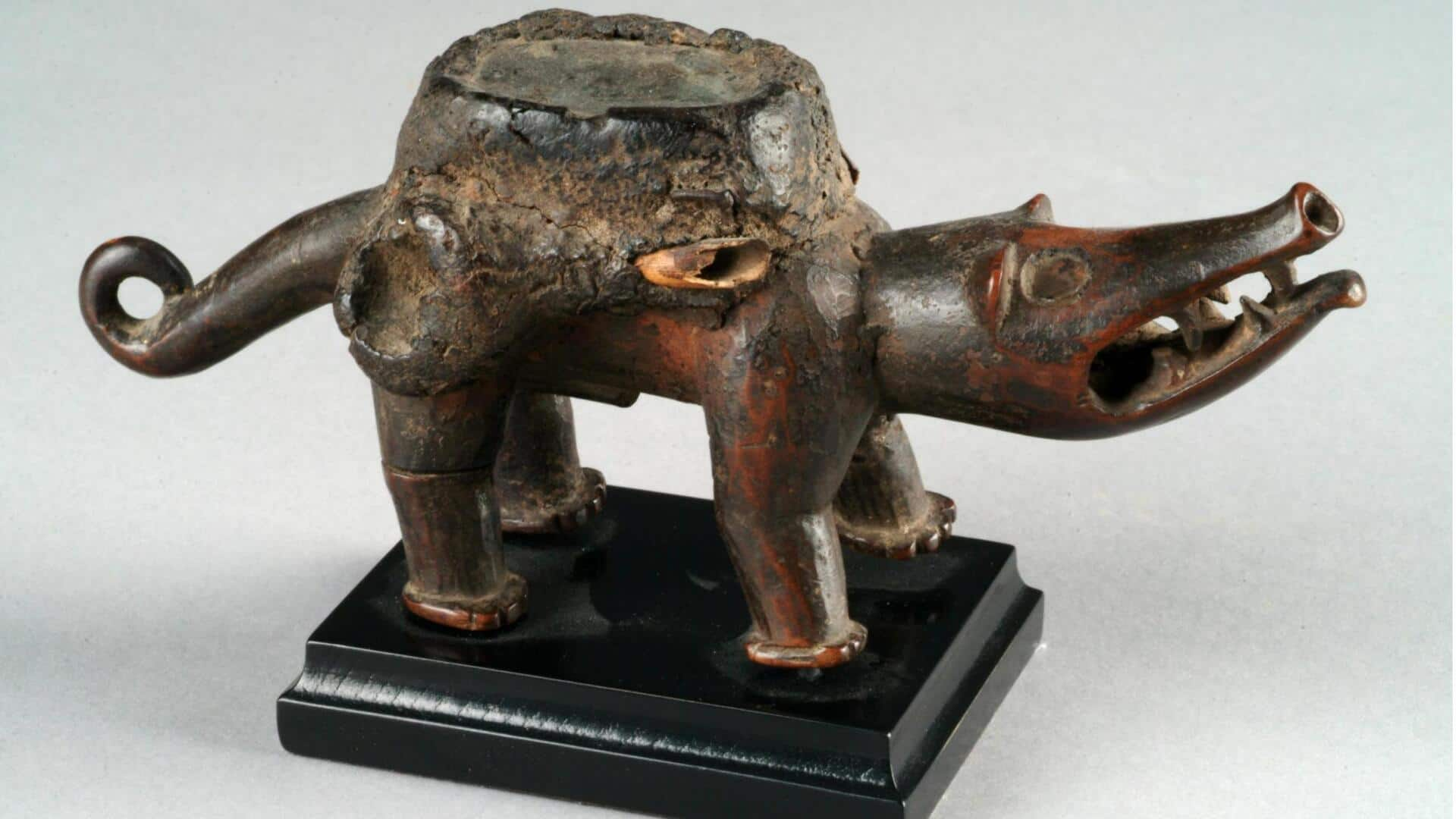
All about nkisi figures
What's the story
BaKongo Nkisi figures are an integral part of Central African culture, particularly the Kongo people. These figures are not just artistic expressions but also serve as spiritual and social functions. Carved from wood and often embellished with various materials, nkisi figures are believed to house spirits that protect communities, cure ailments, and ensure justice. Their unique features and cultural significance make them fascinating subjects for study.
#1
Spiritual significance of nkisi figures
Nkisi figures are considered vessels for spirits in Kongo culture. They are used in rituals to invoke protection, healing, and guidance from ancestors or other spiritual entities. The figure's appearance is often customized with added materials like nails or cloth to symbolize the specific intentions or requests made during ceremonies. This spiritual connection makes them sacred objects within their communities.
#2
Artistic features and craftsmanship
The craftsmanship of nkisi figures is a testament to the artistic skills of Kongo sculptors. Each figure is characterized by distinct facial features, postures, and embellishments that denote its purpose. The use of materials such as metal, glass beads, or cowrie shells adds to its visual appeal while serving symbolic purposes. The meticulous details in each piece highlight the cultural narrative it embodies.
#3
Role in social justice practices
Nkisi figures also play a role in social justice among the Kongo people. They are used during mediations or conflict resolutions where community members seek fairness or accountability from one another or from higher powers. By invoking these figures' presence through rituals or ceremonies, communities aim to restore harmony by addressing grievances effectively.
Tip 1
Preservation challenges faced by nkisi figures
Despite their cultural importance, nkisi figures face preservation challenges due to environmental factors and colonial histories that have led to their dispersal across museums worldwide. Efforts are being made by various organizations to raise awareness about these challenges and promote conservation efforts so future generations can appreciate this unique aspect of Central African heritage without losing its historical context entirely.